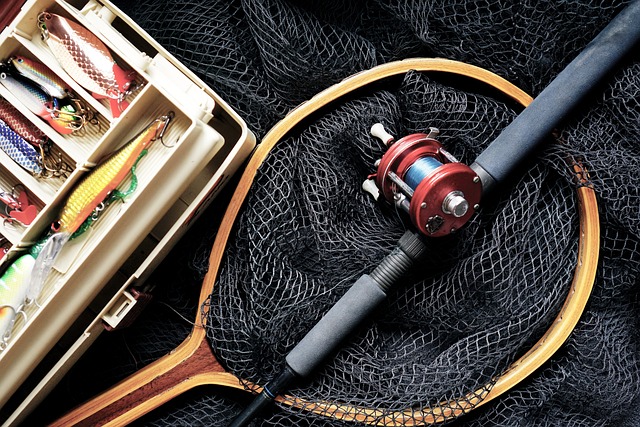Rat rods, a post-WWII hot rod style with aggressive faces and sleek profiles, have become globally popular. Online stores offer both vintage 1940s parts and modern variations for DIY restoration kits, allowing enthusiasts to create unique vehicles blending classic charm and modern performance. Detail-oriented part selection and construction is key to achieving an authentic Rat Rod aesthetic true to its 1930s-1940s roots.
Uncover the allure of rat rod restoration with our comprehensive guide. Delve into the world of these iconic, custom-built cars, exploring their history and enduring appeal in select rat rods. Learn how to choose the perfect restoration kit for your project, demystifying common processes from body work to paint jobs. Discover insider tips for a successful DIY transformation, turning your old steel into a gleaming, modern classic.
- Understanding Rat Rods: History and Appeal
- Choosing the Right Restoration Kit
- Demystifying Common Restoration Processes
- Tips for Successful DIY Rat Rod Restoration
Understanding Rat Rods: History and Appeal

Rat rods, a unique and distinctive style of hot rod, have captured the hearts of car enthusiasts worldwide. This retro-modern aesthetic, characterized by its aggressive front ends, elongated fenders, and sleek profiles, emerged in the post-World War II era, particularly in the 1940s and 1950s. The term “rat rod” is believed to have originated from the rough and raw appearance of these cars, reminiscent of a rat’s face with its snarling front end and sleek body.
The appeal of rat rods lies not only in their striking visual impact but also in the sense of freedom and rebellion they represent. Many car enthusiasts are drawn to the idea of building their own rat rod car, allowing them to blend vintage aesthetics with modern technology. Online stores now offer a vast array of rat rod parts, making it easier than ever to bring these iconic designs to life, whether you’re looking for something authentic from the original 1940s rat rod designs or modern variations that pay homage to the past.
Choosing the Right Restoration Kit

When selecting a Rat Rod restoration kit, it’s crucial to pick one that aligns with your vision and the specific needs of your vehicle. Not all kits are created equal; some offer more comprehensive options for replicating the iconic original 1940s rat rod designs, while others may focus on steel draught rat rod frames for those seeking a more authentic vintage experience.
Consider your desired level of customization and performance upgrades as you make your choice. A quality restoration kit should include everything needed to bring your Rat Rod to life—from body panels and hardware to paint and finishing touches. Ensure the kit is compatible with your car’s make and model, allowing for a seamless and accurate restoration that pays homage to the classic rat rod aesthetic.
Demystifying Common Restoration Processes

Restoring a Rat Rod isn’t as daunting a task as it may seem. At its core, it involves a blend of meticulous craftsmanship and thoughtful customization. The process often begins with selecting the right components, like sturdy steeldraught rat rod frames, which form the backbone of the vehicle. This is followed by sourcing or creating unique rat rod parts that reflect both classic and modern aesthetics. Many enthusiasts opt for contemporary twists on traditional design, blending old-school charm with modern performance enhancements.
Navigating the vast array of options available in online stores catering to modern rat rod customization allows restorers to tailor their creations down to the smallest detail. From exhaust systems to custom paint jobs, every element contributes to crafting a one-of-a-kind Rat Rod that truly stands out on the road or display.
Tips for Successful DIY Rat Rod Restoration

When tackling a DIY Rat Rod Restoration project, selecting the right components is crucial for achieving a classic aesthetic and optimal performance. Opting for genuine or high-quality replica parts specific to 1930s-1940s auto restoration will ensure your Rat Rod accurately represents that era’s distinctive style. This includes details like fenders, grille, headlights, and even interior elements, all of which contribute to the car’s overall charm.
Additionally, proper planning and research are essential. Study vintage hot rod insurance guides and resources dedicated to restoring classic American cars to gain a deeper understanding of the restoration process. This knowledge will help you navigate any challenges and ensure your Rat Rod turns out as envisioned. Remember, attention to detail, both in part selection and construction, is key to creating a remarkable and authentic Rat Rod.
Restoring a rat rod is not just about reviving an iconic vehicle; it’s about embracing a unique automotive culture. By carefully selecting the right restoration kit and understanding the processes involved, DIY enthusiasts can bring these classic cars back to life while preserving their distinct allure. With the right approach, choosing the perfect Rat Rod restoration kit becomes a pivotal step in crafting a true masterpiece on wheels—a testament to both skill and passion for these retro rides. When it comes to Select Rat Rods, knowledge is power, and with the right tools, anyone can become a part of this vibrant, bustling automotive community.
